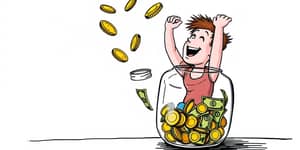Credit cards can be powerful tools for building wealth and accessing rewards—but they can also trap unwary consumers in spiraling debt. In Q1 2025, the average credit card debt among cardholders reached $7,321, while total U.S. card balances hovered at $1.18 trillion. Nearly half of Americans carry a balance month to month, and delinquency rates are climbing in lower-income communities. Understanding how to wield credit responsibly is essential for financial health.
Credit Card Debt Landscape
Modern consumers face a complex credit environment shaped by inflation, shifting interest rates, and unpredictable expenses. Credit cards offer convenience and rewards but can impose steep costs if used unwisely. By grounding our approach in real-world data, we can navigate these challenges with confidence.
These figures underscore the need for actionable strategies to avoid unnecessary fees, damaging interest, and long-term financial strain.
Understanding Credit Card Basics
Before diving into best practices, it’s crucial to grasp the core mechanics of a credit card account. Cards feature a grace period, usually 21 to 25 days after your statement closes. If you pay your balance in full by the due date, you owe no interest.
If you carry a balance, however, your issuer charges interest on the unpaid portion. Rates often range from 15% to 25% APR, but introductory offers or penalty rates can differ. Fees for late payments, balance transfers, and cash advances add another layer of complexity.
Familiarize yourself with your card’s terms: the APR, grace period length, billing cycle dates, and any fees. Knowing these details empowers you to plan payments and avoid unwanted surprises.
Budgeting and Planning for Success
A solid budget lays the foundation for responsible credit card usage. Start by tracking all income and expenses for one or two billing cycles. This exercise reveals patterns and helps you set spending limits that align with your financial goals.
Use budgeting tools—whether mobile apps, spreadsheets, or paper ledgers—to monitor transactions daily. When you know exactly where each dollar goes, you can resist impulse purchases and keep your credit utilization ratio below 30%.
- Allocate fixed expenses (rent, utilities) first.
- Set aside emergency savings before discretionary spending.
- Assign specific categories for groceries, dining, and entertainment.
- Review and adjust your plan monthly.
Optimal Payment Practices
Paying off your balance each month is the single most effective strategy to sidestep interest charges. When you pay the full statement balance each month, you maintain a zero-interest cycle and protect your credit score from late payments.
If full repayment isn’t possible, aim to pay more than the minimum due. Minimum payments often cover only interest and a small fraction of the principal, keeping you in debt longer and costing thousands in extra interest.
You can further streamline payments by using your bank’s bill-pay service or setting up alerts. Many issuers allow you to set up automatic payments to avoid misses, ensuring consistent on-time performance.
Managing Credit Utilization Effectively
Credit utilization—the ratio of your outstanding balance to total available credit—greatly influences your credit score. Experts recommend keeping utilization under 30% both per card and across all accounts.
For example, if a card has a $1,000 limit, try to carry no more than a $300 balance. Splitting expenses across multiple cards can help you maintain lower ratios. Regularly reviewing your utilization allows you to adjust spending habits before they negatively impact your credit profile.
Tips for Staying on Track
Consistency is key. Implement these daily, weekly, and monthly habits to stay in control of your credit:
- Check your credit card statements within 48 hours of closing.
- Monitor your free credit score and report online monthly.
- Use notifications to catch unauthorized transactions quickly.
- Review recurring payments and subscriptions quarterly.
Avoiding Common Pitfalls
Even disciplined users can fall into credit traps. Be wary of these frequent mistakes:
- Making only minimum payments, which prolong debt and inflate costs.
- Opening new accounts solely to chase low promotional rates.
- Using cards for cash advances, due to high fees and immediate interest.
- Maxing out credit limits, which damages credit scores and incurs penalties.
Taking Action If You’re in Debt
If you already carry significant credit card balances, relief is possible through structured repayment methods:
- Employ the avalanche method: prioritize higher-interest debts first.
- Consider a balance transfer offer with a 0% introductory APR—read all terms carefully.
- Negotiate lower rates or payment plans with your issuer if you struggle to pay.
- Seek professional guidance from a nonprofit credit counselor or financial advisor.
The Benefits of Responsible Credit Use
Mastering credit cards delivers lasting rewards beyond avoiding debt. Responsible habits help you:
- Build and maintain good credit over time, unlocking lower rates on mortgages and loans.
- Earn cashback, points, or travel perks without overspending.
- Access consumer protections for fraud and purchase disputes that debit cards often lack.
- Gain clarity on spending patterns to refine your overall budget.
Conclusion
Credit cards, when managed wisely, can be powerful allies in your financial journey. By setting clear budgets, paying in full whenever possible, monitoring utilization, and avoiding common traps, you safeguard your credit health and save money. Even if you carry existing balances, structured repayment plans and professional support can guide you back to stability.
Embrace these strategies today, and transform your credit card from a potential liability into a tool for financial empowerment.
References
- https://www.lendingtree.com/credit-cards/study/credit-card-debt-statistics/
- https://www.stlouisfed.org/on-the-economy/2025/may/broad-continuing-rise-delinquent-us-credit-card-debt-revisited
- https://www.newyorkfed.org/microeconomics/hhdc
- https://www.bankrate.com/credit-cards/news/credit-card-debt-report/
- https://tradingeconomics.com/united-states/debt-balance-credit-cards
- https://www.ent.com/education-center/using-credit-wisely/how-to-use-a-credit-card-responsibly/
- https://use.expensify.com/blog/credit-card-statistics
- https://www.nationwide.com/lc/resources/personal-finance/articles/guide-to-using-credit-card










